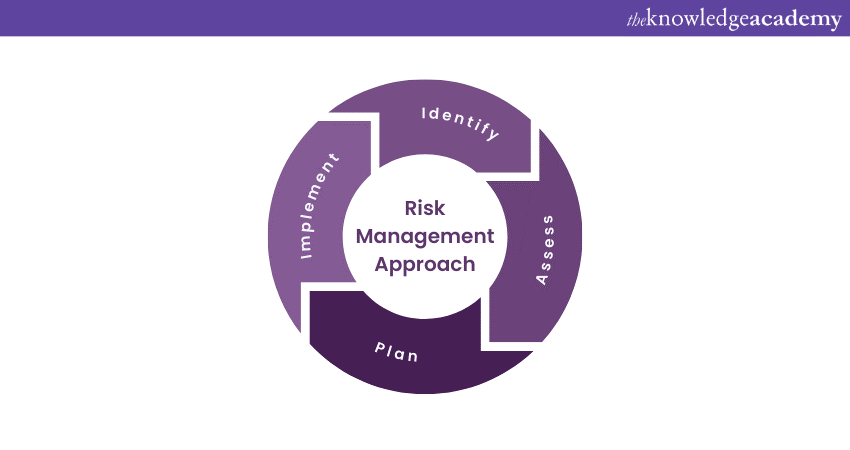We may not have the course you’re looking for. If you enquire or give us a call on 44 1344 203 999 and speak to our training experts, we may still be able to help with your training requirements.
Training Outcomes Within Your Budget!
We ensure quality, budget-alignment, and timely delivery by our expert instructors.

Today, PRojects IN Controlled Environments (PRINCE2) is a widely used project management methodology. Since its conception in 1989, the PRINCE2 methodology has been essential to the project management domain. It is a highly valued method for project execution, practised in over 150 countries.
Project management methodologies are used in many organisations today. According to Inspiring Projects, the UK National Health Service stated that 66% of the projects that used PRINCE2 were successful. Read this blog to learn about the six PRINCE2 Aspects and how they can help you complete a project successfully.
Table of Contents
1) The Six PRINCE2 Aspects
a) Project Scope
b) Costs
c) Timescales
d) Risk
e) Quality
f) Benefits
2) Conclusion
The Six PRINCE2 Aspects
Implementing PRINCE2 for your projects is a beneficial move for your project. One of the pros of using this methodology is its flexibility. It can be used in projects across industries, enabling you to tailor the framework according to projects’ needs.
PRINCE2 is a trusted project management methodology because it never swerves from its six fundamental aspects. These aspects are essential and can be tracked by Project Managers every step of the way. So, what are the six PRINCE2 Aspects? The PRINCE2 6 Aspects are as follows:
Project Scope
Project scope in PRINCE2 refers to building a structure to follow for project completion. It is easier to complete a project when the goals have been set, instructions to work are available, and deadlines are pre-determined alongside project deliverables. PRINCE2 Roles and Responsibilities include following the carefully crafted project scope ensures that work is correctly completed on time.
The project scope is printed on a document after finalising the structure, known as the project scope statement. It is essential to achieving proper planning as the project can go through multiple mishaps without a clear framework. Here are some of the steps to follow to define your PRINCE2 project scope:
a) Decide the business goals and objectives: Defining your project's goals and objectives is vital in creating a project scope. The objectives refer to everything deliverable at the end of the project, like assets. PRINCE2 Project Manager Roles and Responsibilities include giving a detailed description of the goals, which can be measured after the completion of the project.
b) Specify the project demands: While deciding the business goals and objectives, it is essential to note your project requirements. Apart from deliverables and budget, the available resources are important factors.
c) Project Scope Statement: As mentioned before, the project scope statement carries the entire planning structure of the project. It will include all the aspects of your project, like the project intent, restrictions, deadlines, etc.
d) Change control process: A change process is a set of functions that stakeholders are put through before approving any change. When executing long and complex projects, the scope for a sudden change in plans is unavoidable. Such situations call for a change process.
Costs
Once project goals, objectives, and deliverables are set, the next step involves a detailed breakdown of the project's cost. It is essential to determine the overall cost of a project and stick to methods that will prevent the project from going over budget.
Project budgets in PRINCE2 document information regarding available funds, where they will be spent, and why. Following the project budget throughout the project can ensure teams stay within budget. It is also helpful in obtaining funds from stakeholders like investors and the government. A Project Manager must ensure the project is within the given budget.
Learn about the organisational structure of PRINCE2 by signing up for our PRINCE2 Agile® Foundation course now!
Timescales
The third aspect of PRINCE2 is timescales, the total amount of time within which the project must be completed. It provides members with a project timeline – a rough idea of the time allotted to certain tasks and stages, which helps them complete it on or before time. Completing projects on the decided timeline helps you save time and money.
Risk

The aspect of risk exists in every type of process and project. High costs, inability to complete tasks in the allotted timeframe, and running out of resources are some of the most common risks that occur in projects. Practices of Risk Management in PRINCE2 can help mitigate the risks and ensure they do not harm the project's progress.
A risk management plan consists of four steps – identifying the risk, estimating the extent of its impact, finding solutions, and monitoring the risk assessment at regular intervals. A Strengths, Weaknesses, Opportunities, and Threats (SWOT) analysis is also a good risk identification method in PRINCE2.
Quality
Of all the PRINCE2 6 Aspects, Quality is among the most important. It dictates the level of quality that must be reflected in every deliverable. When the quality of each stage is maintained, it paves the way for the perfect final result of the project.
The client decides the materials used in a project and is as per their quality requirements and standards. A Quality Management Plan can be of great use in meeting quality standards. It is a document that helps the Project Manager and team members sustain quality in all project stages via quality assurance checks, known as the quality management plan. It holds data regarding the steps to uphold quality throughout the project lifecycle. Project management software can help you build the best quality management plans.
Improve your understanding of the PRINCE2 and Agile framework. Enrol for our PRINCE2 Agile® Foundation and Practitioner course now!
Benefits
Benefits is the last PRINCE2 Aspect. It focuses on giving a clear justification for every detail of the project and how it will contribute to successful completion. The Project Manager records the financial and other benefits before starting the project and presents them to the stakeholders. This is done in the early stages of the project. One of the more effective ways of determining the PRINCE2 Benefits is using the Cost-Benefit Analysis (CBA) method.
It is a method which compares and analyses the costs and benefits of the project to find the most effective technique for conducting and managing the project. It monitors costs like direct costs, indirect costs, opportunity costs, etc. It also checks for direct and indirect benefits, total benefits, and net benefits.
Get introduced to the PRINCE2 methodology and the basics of project management. Sign up for our PRINCE2® Foundation Training course now!
Conclusion
There are six PRINCE2 Aspects, which are tracked at every project stage by Project Managers. Although some aspects might look similar to the seven principles of PRINCE2, they aren't the same. We hope this blog has helped improve your understanding of PRINCE2 and its six aspects.
Frequently Asked Questions
Upcoming Project Management Resources Batches & Dates
Date
 PRINCE2® Foundation & Practitioner Training Course
PRINCE2® Foundation & Practitioner Training Course
Mon 13th Jan 2025
Mon 17th Feb 2025
Mon 17th Mar 2025
Mon 7th Apr 2025
Mon 12th May 2025
Mon 16th Jun 2025
Mon 7th Jul 2025
Mon 4th Aug 2025
Mon 8th Sep 2025
Mon 13th Oct 2025
Mon 17th Nov 2025
Mon 8th Dec 2025







 Top Rated Course
Top Rated Course



 If you wish to make any changes to your course, please
If you wish to make any changes to your course, please


